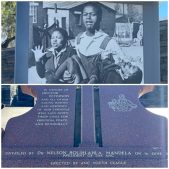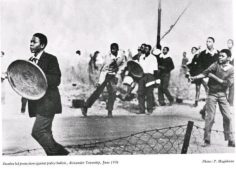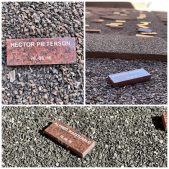Wednesday is Youth Day in South Africa – a day when the country pays tribute to all the young people who played a role in the dismantling of the apartheid’s oppressive system.
The day is in commemoration of the Soweto Uprising, which took place on June 16, 1976.
On that fateful day – a peaceful march to Orlando Stadium quickly turned violent and left more than 170 young South Africans dead and many others injured during an ambush by the apartheid police. It was part of young people’s dissent against a 1974 directive from the then Bantu Education Department that Afrikaans be used on an equal basis with English as a language of instruction in Black secondary schools.
The Soweto Uprising is hailed as having changed South Africa’s socio-political landscape.
While some dismiss this day as just another holiday, others believe it is a reminder that young South Africans should become agents of change, reconstruction, and development.
One of the first young people to be killed by the police on that day was 12-year-old Hector Pieterson.
To pay homage to the contribution Pieterson and his peers made to the emancipation of South Africa’s Black majority and the establishment of a democratic society, which is built on equality and a respect for human rights, among others, the Hector Pieterson Memorial and Museum was established.
Things to see at the museum
The museum is situated in Orlando West, Soweto, and tells a story of the young people who didn’t flinch in the face of a brutal government.

Loading…
The history of Soweto, the Afrikaans language, Black Consciousness, and the June 16 protests – with “To Hell with Afrikaans” placards – is laid bare.
The Museum was opened on 16 June 2002 near the place where 12-year-old Hector Pieterson was shot dead.

The museum also has videos and recordings that contrast life in Soweto and in White areas. There are countless clippings from Black daily newspaper, The World, and footage from SABC.
There are many iconic photos by Sam Nzima and Dr. Peter Magubane, to name a few.
Bricks with the names of those who lost their lives on that fateful day are laid on the ground outside the museum, called the garden of remembrance.
The bricks on the floor are symbolic of the bodies that were scattered on the ground after they were gunned down by apartheid police.
There is also a photo of Mbuyisa Makhubo carrying Hector Pieterson’s young body while his sister, Antoinette, ran beside them. The picture shocked the world and changed the course of the country’s history. Opposite the photo are the two types of guns that were used to shoot at the protesters.
The place is dark, cold and it is a spiritual experience as you enter into the world as it was in 1976, with the exception of one room dedicated to funeral processions that followed the tragedy. The place is the brightest section of the museum as the sun shines directly into it. It has poems by Don Matera as well as Die Kind by Ingrid Jonker.
In one of his poems written in 1983 and dedicated to Pieterson, Mattera wrote:
A bullet burnt
Into soft dark flesh
A child fell
Liquid life
Rushed hot
To stain the earth
He was the first victim
And now
Let grieving willows
Mark the spot
Let nature raise a monument
Of flowers and trees
Lest we forget the foul and wicked deed.
Poet, filmmaker, producer, journalist and playwright Duma Ka Ndlovu was a 21-year-old journalist during the 1976 Soweto Uprising.
He speaks about events leading to the uprising in the video below:








